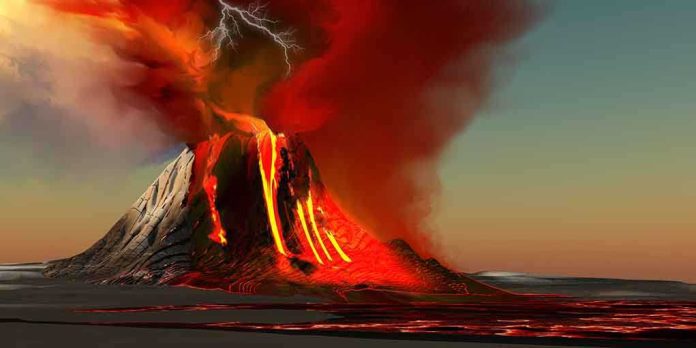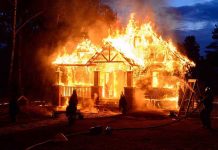
Japan’s Sakurajima volcano has awakened from its winter slumber, hurling ash and smoke thousands of meters into the sky in a dramatic display that has authorities scrambling to assess the threat level.
Story Snapshot
- Sakurajima’s Minamidake crater erupted Sunday after months of dormancy since October
- Massive ash and smoke column shot thousands of meters into the atmosphere
- Local communities placed on heightened alert as volcanic activity resumes
- Southwestern Japan faces renewed concerns about one of the world’s most active volcanoes
The Sleeping Giant Stirs Again
Sakurajima’s Minamidake crater broke its four-month silence with a thunderous eruption that sent towering plumes of ash and smoke billowing into the Japanese sky. The volcanic outburst marks the first significant activity from this particular crater since October 2023, catching both scientists and local residents off guard. This sudden reawakening demonstrates the unpredictable nature of one of Japan’s most closely monitored geological hazards.
The timing of this eruption raises questions about what triggered the volcano’s return to activity. Sakurajima sits on the restless Pacific Ring of Fire, where tectonic plates constantly shift and grind against each other. The months of apparent calm may have been deceiving, as magma chambers deep beneath the surface continued their relentless buildup of pressure and heat.
A Mountain With a Violent History
Sakurajima earned its fearsome reputation through centuries of explosive behavior that has shaped both the landscape and the lives of nearby communities. This volcanic island, connected to the mainland by hardened lava flows from previous eruptions, represents the raw power of geological forces that most people never witness firsthand. The volcano’s proximity to populated areas makes every eruption a potential crisis.
Local authorities maintain sophisticated monitoring systems around Sakurajima, tracking seismic activity, gas emissions, and ground deformation patterns that might signal impending eruptions. Despite these advanced warning systems, volcanoes operate on their own timeline, often defying human predictions and preparations. The current eruption serves as a stark reminder that nature ultimately calls the shots.
Living in the Shadow of Fire
Residents of southwestern Japan have learned to coexist with their volcanic neighbor, adapting their daily routines to accommodate the constant threat of ash falls and potential evacuations. Schools conduct regular volcano drills, households stock emergency supplies, and local businesses maintain contingency plans for sudden eruptions. This culture of preparedness reflects the reality of life near active volcanoes.
The economic impact of volcanic activity extends far beyond immediate safety concerns, affecting agriculture, transportation, and tourism throughout the region. Ash clouds can ground flights, contaminate water supplies, and destroy crops, creating ripple effects that reach far from the eruption site. Communities that have thrived for generations in volcanic regions understand these risks but choose to remain, drawn by fertile soils and cultural ties to the land.
Sources:
Japan’s Sakurajima volcano erupts, ashfall cancels multiple flights












